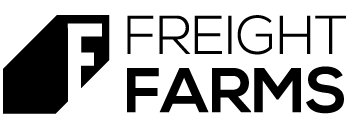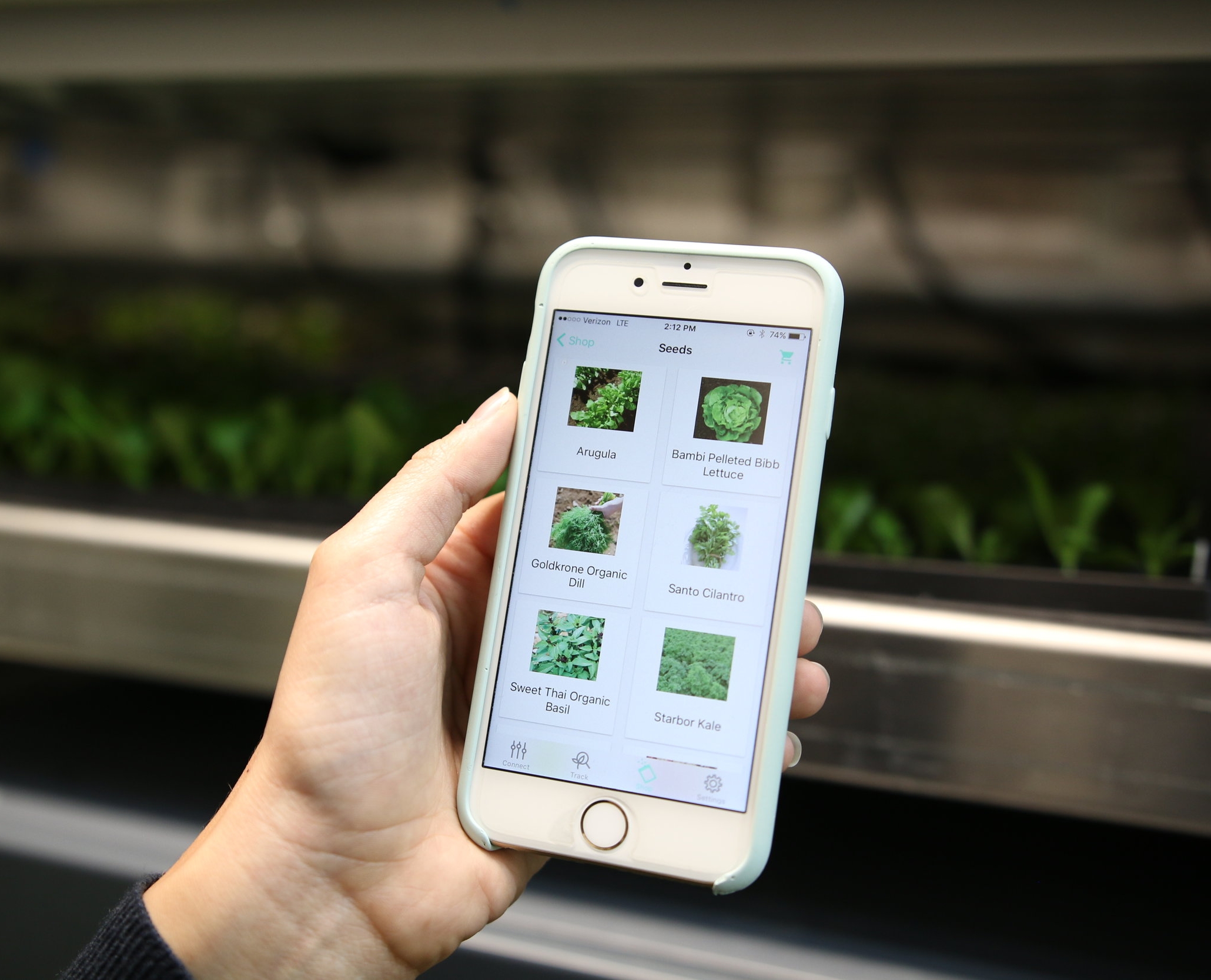Webinar Part 2: Question and Answer Recap
In part two of this blog series, we’re breaking down the Question and Answer section of the webinar: A Freight Farmer's Journey: How Agora Greens launched their Small Business with the LGM. If you haven't gotten a chance to watch the webinar recording, you can always breeze through our recap blog post here, or watch a video interview here!
During the Question and Answer section of the webinar, we got quite a few questions geared directly towards Agora Greens and others for Freight Farms specifically. Below find the top 14 questions we received:
1. How many different customers does Agora Greens sell to?
Agora Greens is currently selling to a small amount of homeowners, two local farmers markets, a country club, and the rest to local restaurants. Because of the progress they’ve seen in their first 6 months, they are seeking to scale operations and become a multi-LGM project.
2. While speaking to restaurants and chefs locally during early market research, what were some of the questions and concerns they had, and how did Agora Greens address them?
The biggest thing that the restaurants were looking for was consistency and freshness of the produce. Agora Greens is able to position itself as being hyper local and extremely reliable and consistent with their deliveries, even through the winter months when produce is typically shipped in from across the country. As a small business, they can guarantee delivery 3 days a week or every other day if need be. Being lean and flexible has proven to be a high value proposition in their business model. For freshness, they deliver the produce with the root balls still intact, extending the crop’s shelf life by two weeks, and quelling any fears of the durability of their product.
3. Were customers willing to switch to a higher price point for this better/local lettuce?
Some do and some do not. Some of their clients are generally intrigued by the business they are operating and are willing to purchase at a higher cost. A common conversation when it comes to pricing is usually centered around price gaging. Many buyers purchase lettuce for a lower price point during the summer when the crop is abundant. However, come winter, the price of lettuce increases as much as 5X the amount it was during summer. With the LGM as a supplier, you get a fixed price year-round.
“...We will tell them about the fact that in the dead of summer when there is a lot of lettuce, you are paying a $1.50 a head. But in February you are paying $2.50 a head because you are having it shipped from California, Mexico, or whatever it is. You are paying for that. You’re not going to have to pay for any of that when you get it from Freight Farms.”
4. What foundation did Agora Greens lay down for the LGM? What sort of modification did you have to do for the electricity or water, if any? And the zoning for the actual site?
Agora Greens leveled the ground of their site according to Freight Farms site-prep recommendations, and laid down gravel. They used an electrician to ensure the proper hookup of the LGM once it was delivered, and use a garden hose for water.
We recommend the following for site preparation:
Foundation - we suggest placing the farm on either trap rock, railroad ties, sonotubes, or a 45’ x 10’ concrete pad
Electrical - The LGM requires a 60 amp, 120/240 volt single phase connection (120/208 volt three phase is also acceptable).
Water - You’ll need access to water in order to the fill water tanks inside the LGM. A designated water source is suggested, but it can be achieved with a common garden hose feed as well.
Zoning is very town specific. The best way in approaching this is to talk with your local municipality and explain your project. Generally we see freight farmers find a site for the LGM in areas zoned as industrial, commercial, and or mixed use.
“Current zoning is mixed use and industrial space - it meets all those specifications - however, we decided to go there but we could’ve easily put it at one of our houses and done the same thing, it would have been completely legal in our town.”
5. How is the climate in the LGM optimized?
Inside each farm is a series of environmental sensors that measure climate conditions (temperature, humidity, CO2 , and nutrient levels) and communicate with the in-farm controller. The controller then responds to air and water sensors to maintain optimal growing conditions. The multi-planed airflow and intercrop aeration system keeps air circulating through the dense growing environment inside the container. This automated smart ventilation system controls temperature and humidity with a 24,000 BTU air conditioner in addition to balancing internal and external temperature.
6. Can the LGM grow in extreme hot or cold climates?
Yes to both. There are LGMs operating in Southern hot climates like Texas, Arizona, and Florida, as well as really cold Northern climates like Minnesota, Wisconsin, and parts of Canada. Read the list of 5 features that enable growing in frigid temperatures here.
7. Can the Leafy Green Machine be customized?
Not at this time. All units are built out to our same high quality specifications along with a thorough quality control inspection before being shipped out. This method allows us to support our farmers by eliminating any confounding factors, allowing us to resolve any mechanical issues that may arise. However, we do see a lot of people add-in things for themselves after the fact such as business logos and work tables inside the farm.
8. What are the ongoing monthly costs to operate the LGM?
Average monthly operation cost for an LGM is approximately $1,100. It is important to note that each farm will vary slightly, as electricity and water rates are specific to each location.
9. What is Farmhand Shop?
fh Shop is an online e-commerce platform that makes it quick and easy for farmers to purchase their supplies. It’s available through the farmhand app or a web browser. Farmers can browse through a curated collection of seeds, nutrients and farm supplies from top hydroponic and indoor gardening brands. All fh Shop purchases are shipped directly to the customer’s door and include tracking information to ensure successful delivery.
10. Do farmers have to purchase seeds and nutrients through Freight Farms?
Not at all. Our main priority is to provide it if you need it, but if you have another supplier that you prefer to go to, we absolutely encourage that as well . It’s whatever you're most comfortable with.
11. With the plants growing out horizontally, how do you maintain the shape of the plant?
Plants grown in vertical towers in the LGM do not form different shapes than those grown traditionally in horizontal beds. However, we have seen some outliers with tight forming heads, like cabbages and romaine. For example, romaine took on a slightly different shape upon harvest, forming more of a trumpet shape instead of the traditional torpedo shape.
12. Do we have multiple freight farmers in the same metro area?
Yes, we absolutely do. Boston is one of our biggest hubs and then Houston and Phoenix are two other great examples of where we have multiple freight farmers operating. Some newer folks might be a little concerned that a market can be saturated with so many freight farmers in a single area. That is a misconception! If anything you are each contributing to the food movement and getting the word out faster about the produce that you are able to grow and how you are able to do it. This brings more credibility to the operations and it also develops a stronger sense of community.
13. How long between purchase and delivery?
The average window from initial deposit to delivery is about 8 weeks. That’s useful time for you to start doing market research and building your business plan or teaching yourself and your community about the farm. I think a lot of people end up making great use of that time. It’s also the time during which you attend Farm Camp training, and prep your LGM site!
14. What support exists if anything mechanical in the farm goes wrong?
The Freight Farms support team is here to field and questions or help with an issues that may arise with the LGM. Also, the Leafy Green Machine is complex as a whole buts it’s really built out of simple systems that work together. There is nothing in there that your local specialist (electrician/plumber) would not recognize. There are manufacturing warranties on most of the components in case anything is faulty.
We hope you found this Q&A recap helpful! Stay tuned, as we'll be hosting more webinars to guide future farmers through the growing process.
If you're ready to start your Freight Farms project and would like to get in touch with someone from our sales team, contact us here!



